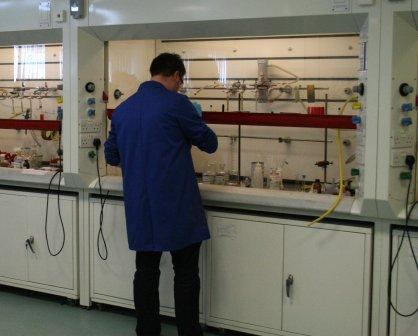Prof Colin J Suckling OBE DSc FRSE from the Department of Pure & Applied Chemistry, at University of Strathclyde, explains the importance of getting your chemistry right
A lot of people, especially in media circles, respond only to what is branded as new without considering significance including making new things possible. It is true that the bases of many of the core sciences were established a long time ago, in the case of mechanics and hydraulics, for example, centuries ago at the beginning of written history. In the case of my fields of interest, the scientific principles of chemistry go back to late 18th and through the 19th and 20th centuries, a comparatively short time. The point about this remark is that new knowledge rarely comes from nothing; it soundly based on accumulated prior information and understanding. I follow happily a dictum from the Lord Todd of Trumpington, Nobel Prize winner and former Chancellor of the University of Strathclyde, which runs: ‘Chemistry is the Queen of Sciences. Get your chemistry right and everything else follows’. This is a snappy way of reminding us that chemistry is a science that creates its objects for study and, most importantly, objects that are components of useful materials and devices.
Lord Todd’s field of study was the chemical synthesis and properties of a class of compounds known as nucleotides, which includes components of DNA. His work established the basis for the chemical synthesis of nucleotides and related compounds that in other people’s hands eventually led to understanding the genetic code, to the chemical synthesis of DNA itself and to many procedures fundamental to molecular biology. Todd’s Nobel Prize-winning research in the 1940s and 1950s contributed to making a great deal of contemporary science and technology possible. One of the features of the field in which he worked is the enormous variety of chemical compounds that were investigated based upon a relatively small number of central patterns. This is a characteristic of what is called ‘heterocyclic chemistry’, which simply means the chemistry of compounds that contain rings of atoms with at least one element other than carbon. It is one of the core fields of chemistry to which I referred in the paragraph above and its sheer versatility and flexibility make it central to modern technologies as diverse as television screens and new drugs (see my e-book published by Open Access Government: ‘Why does heterocyclic chemistry matter?’). It’s important to make new things happen by the intelligent and wise application of science and heterocyclic chemistry is one major field that makes this possible.
With this background then, it’s no surprise that much of the research that we carry out at the University of Strathclyde has heterocyclic chemistry at its core. In my own laboratory, we are concerned with the discovery of new anti-infective drugs for treating both human and animal populations and the discovery of new immunomodulatory and anti-inflammatory compounds. In both of these projects, we have taken approaches that are not typical of the way the pharmaceutical industry approaches drug discovery. The big pharma paradigm is to find a compound that provides an improvement for the patient (not necessarily a cure) by targeting a single component of the pathology that is causing the disease, be it an infectious agent (bacterium, fungus, parasite, or virus) leading to a single measurable effect; put simply it’s one drug, one target, one effect. There are good reasons for working in this way, mostly to do with the minimisation of risk, but it’s not the only way to advance drug discovery. Indeed, it can be argued that the big pharma paradigm limits advances. In our discovery programmes at the University of Strathclyde, therefore, we have adopted approaches that industry would consider too risky. In both of our projects mentioned, heterocyclic chemistry and its inherent flexibility have played a major role.
I’ll illustrate this for our anti-infectives programme which is the most advanced and has heterocyclic chemistry is at the heart. Our compounds synthesized at the University of Strathclyde being developed for antibacterial, antifungal and antiparasitic applications belong to a class of compound known as minor groove binders (S-MGBs) that engage DNA to kill the infectious agent in ways yet to be worked out in detail. Our best compounds are very potent but somewhat surprisingly, are not toxic to mammalian cells and more surprisingly still are in general effective in mouse models of disease without evidently causing adverse effects in the mouse. This selective toxicity is what is needed in an anti-infective drug: kill the disease-causing agent but not the host. Moreover, because of the way S-MGBs work it has proved impossible so far to generate resistance to our S-MGBs in laboratory experiments, a very important advantage for a drug that would be widely used in the field over many years.
That we can achieve these things is down to the flexibility of heterocyclic chemistry whereby we can make small, subtle changes to the structures of our S-MGBs whilst maintaining the essential properties of binding to DNA and killing bacteria, fungi or parasites. It’s unpredictable what a small change in structure will do. For example, we have found that the addition of just one carbon atom as a methyl group improves the potency of an S-MGB by as much as tenfold. Small changes can also influence the physical-chemical properties of S-MGBs so that active compounds suitable for a variety of routes of delivery, for example, injectables, non-absorbed oral formulations, or topically active creams can be obtained. All of these properties are controlled by the chemical structure of our S-MGBs so that we can truly connect with Lord Todd’s dictum: ‘Get your chemistry right and everything else follows’.
Please note: This is a commercial profile












